Videos by Shriya Gautam
Based on an eponymous paper, published in 2019, this talk elaborates how the Gurjara Pratiharas u... more Based on an eponymous paper, published in 2019, this talk elaborates how the Gurjara Pratiharas used temples as socio-political tool to negotiate their right to rule newly acquired territories. The talk was delivered at the Eurasian Archaeology Seminars at the Graduate Archaeology at Oxford Forum, University of Oxford, in January 2021. 85 views
Papers on the Gurjara Pratihara Temples by Shriya Gautam
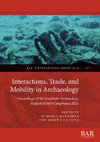
Interactions, Trade, and Mobility in Archaeology: Proceedings of the Graduate Archaeology Oxford (GAO) Conference 2021, 2023
Religious structures in India were almost always built along or close to trade routes. One of the... more Religious structures in India were almost always built along or close to trade routes. One of the main reasons for this was the use of sites of religious importance as a place to stay and as makeshift banks by ancient traders, similar to how the caravanserais came to be used in late Medieval times and Mughal India (cf. Frankopan 2015: 52 ; Sharma 2010: 283). Religious sites, thus, became arteries of trade, where traders could deposit and withdraw money in lieu of traditional bills of exchange called hundis, especially if they were travelling long distances and found it difficult to carry cash. As a result, constructing temples has been favoured in several ancient Indian treatises, including the Arthashastra, which advises rulers to invest in building and commissioning temples along the major routes. With this hypothesis, which has been stated by several scholars of Ancient and Early Medieval India (cf. Thapar 2004; Frankopan 2015:52), this research is based on the survey of twelve such temples attributed to the Gurjara Pratihara Dynasty of North India (circa 8th to 12th century CE). It seeks to evaluate whether this hypothesis was actually true for all religious sites. It also seeks to place these temples along the trade routes of Ancient India to establish whether sufficient archaeological evidence exists to assert that temples served as points of economic and social contact in Early Medieval India. For the purpose of this paper, the sites were surveyed, documented and studied in juxtaposition to ancient records of trade routes for a period of four years and its results shall be discussed in detail in this paper.

National Seminar on History, Art, Archaeology and Culture 2018 (Department of Language and Culture, Himachal Pradesh)
The vernacular hill architecture of the Himalayan Region or the Kath-khuni architecture govern... more The vernacular hill architecture of the Himalayan Region or the Kath-khuni architecture governs a lot in terms of material culture, the people, the geographical landscape and geology of the area that includes the Indian hill states of Himachal Pradesh and Uttarakhand and extends to parts of the neighbouring countries of Nepal and Pakistan. Of particular interest among the buildings built in this indigenous architectural style, are the temples of the region. In the quintessential Himalayan villages, temples are structurally located at the highest point of the settlement, emphasising both their importance and the spiritual significance associated with the deity enshrined within. In several districts of Himachal Pradesh, many temples in ruinous states, belonging to other dynasties and originally built in other styles, were restored and converted using the Kath-khuni conventions of building. The focus of this paper is on the Gurjara-Pratihara Temples of the Himalayan Region, particularly the ones located within Himachal Pradesh. The Gurjara-Pratiharas of North India were one of the first four patrilineal clans of the caste group referred to as the Rajputs. Although their significance has largely been overlooked by historians and students of history, their influence on art and culture, and their political sway over the major part of North India, from the 9th to the 11th century, cannot be ignored. In the highly caste-ridden Early Medieval Indian society, where power was centralised with the ruling clans, temple construction had more than just spiritual implications. Temples served as economic predecessors to modern day banking institutions as well as a tool for newly emergent caste groups for negotiating one's identity and establishing the authority to rule. Through an intensive study of the existing historiography, the epigraphic evidence and the temples of the period, this paper attempts to examine the origin of the Pratiharas, and also study how constructing a temple served these functions, bearing in mind their location amidst the Himalayan landscape. It also attempts to study how their conversion poses serious identification problems before archaeologists studying them in a wider context.

Sthapatyam Vol VI(1) pp.38-45, May 2019
The Gurjara-Pratiharas of North India were one of the first four patrilineal clans of the caste g... more The Gurjara-Pratiharas of North India were one of the first four patrilineal clans of the caste group referred to as the Rajputs. Although their significance has largely been overlooked by historians and students of history, their influence on art and culture and their political sway over the major part of North India from the 9th to the 11th century cannot be ignored. One of the most debated subjects in relation to the Gurjara-Pratiharas is their origin and identity, a topic that has, over the years, acquired racial, colonial and nationalistic tinge. Study of the archaeological sources, however, reveal that the Gurjara-Pratiharas probably rose from a varied background and not from the “sacrificial fire altar” as their court historians claim and their contribution to art, especially temple art and architecture was a motif of legitimation of power.
The Early Medieval Indian society (circa 700-1300 CE) was highly caste-ridden, where power was centralised with the ruling clans. Negotiating one’s identity and establishing the authority to rule was therefore a social necessity for any emergent new caste group. Through an intensive study of the existing historiography, the epigraphic evidence and the temples of the period, this paper attempts to examine the origin of the Pratiharas, and also study how constructing a temple served as a tool to negotiate identity and establish power in a religiously and socially divided society
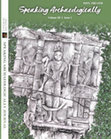
Speaking Archaeologically Journal Volume III Issue I, 2020
In this paper, the main concern is the role of Tantric philosophy in the art of Bhima Devi Temple... more In this paper, the main concern is the role of Tantric philosophy in the art of Bhima Devi Temple of Pinjore. Before delving deeper into how Tantric elements can be identified in the remains of the temple or how Tantra became a part of the act of worship in Hinduism, it becomes imperative to address why Indian philosophy and art are so intrinsically annealed in one another.
It has usually been alleged by Western Scholars of Art that Indian Art very often combines varied and contrasting elements in a singular piece of work. To address this allegation, if not essentially refute it, one needs look no deeper than the Indian attitude to life, something that is reflected in its art, literature and religion. In this context, According to Ananda Coomaraswamy (1918), in the case of Indian Art, “All activity not directed in accordance with a consistent theory of the meaning and purpose of life” is “supremely impractical.” Simply put, Indic Art is created around the belief that if something does not relate to the purpose of life, it is futile. Art, thus, must have religious connotations and religion, in turn, cannot be studied in isolation from philosophy.
Bearing Coomaraswamy’s statement in mind that in the Indian context, “Philosophy is the key to the map of life, by which are set forth the meaning of life and the means of attaining its goal,” this paper will first attempt to define the Tantra Philosophy and the meaning of Puja before exploring how these two philosophical concepts are represented in the art of the site in question .
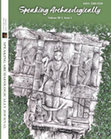
Speaking Archaeologically Volume III Issue 1, pp.64-89
The word “Shiva,” often referring to the Puranic God of Destruction in Hinduism, has a Sanskrit ... more The word “Shiva,” often referring to the Puranic God of Destruction in Hinduism, has a Sanskrit etymology and can literally be defined as the “Auspicious One.” Together with Brahma (the Creator) and Vishnu (The Preserver), he forms the Holy Trinity of the Puranic Hindu pantheon, the emergence of which can be attributed to the period between the second century BCE and the second century CE. Associated with the concept of worship in Hinduism, is the practice of devotional idolatry (also called Murti Puja), the first mention of which dates back to the first millennium BCE, in four Upanishads viz. the Aitareya Upanishad [Verse 3.2], the Prashna Upanishad [Verse 1.5], the Shvetashvatara Upanishad [Verse 1.13] and the Maitrayaniya Upanishad [Verse 6.14].
Since an archaeological study is incomplete without an analysis of the material culture, this paper shall discuss the development of Shaivite sculptures or votive idols of Shiva and attempt an object analysis of some of them from the Bhima Devi Temple in Pinjore. It will, however, not deal with any other sculptures from the site and shall limit its scope to the identifiable manifestations of Shiva, simply because despite the temple’s association with Devi, the Consort of Shiva,there is an insufficient representation of the sculptures of the female deity among the remains recovered from the partial excavations of the 1970s. On the other hand, several sculptures of Devi, that are housed in the Bhima Devi Complex, appear to be from other parallel sites(See Appendix II). Thus, in order to stay faithful to the context, this paper will limit its scope to only Shaivite sculptures, which are in abundance on the site, next only to the Vaishnavite Sculptures and sculptures of some Vedic deities.
In order to understand the Shaivite Sculptures on the site, this paper will first trace the history of the art of sculpture making with respect to Shiva before analysing the particulars of each sculpture from the site. It will also look into some generalised topics pertaining to Shiva and Shaiva sculptures, keeping in mind the utility of these concepts for researchers or readers looking into similar concepts and will therefore, be combining elements of religious philosophy with techniques of make and objective details of each sculpture, that are important for understanding religious sculptures of Indic Art in general and Shaivite Sculptures in particular.
The next section will, therefore, begin with discussing the “concept” of Shiva, as expounded by the vast cannons of primary literature, that are dedicated solely to this particular deity, as well as the interpretations and understanding of the Shaiva philosophy by scholars such as Wendy Doniger(2013).
Following this, it will look into the iconography associated with Shiva, which Sir John Marshall (1931), initially, linked with depictions on a particular seal from the Indus Valley. It will then delve into the art historical chronology of sculptures actually associated with Shiva. The final section will look into the details of the sculptures identified for certain from the site in question.

Speaking Archaeologically Journal Volume V Issue I , 2022
For several years, myths and oral traditions have been used by social scientists to understand se... more For several years, myths and oral traditions have been used by social scientists to understand self perceptions and customs in different social communities (Vansina,1969). The oral traditions also serve as a useful tool to understand how a particular community interacts with its environment as well as its built heritage on a day to day basis (Vansina, 1985) . Consequently, myths, oral narratives and local legends have often been exploited by emergent ruling groups in the past to create and legitimise their political identity (Thapar, 2020).
This is particularly true of the Gurjara-Pratihara Dynasty of North India, that ruled over major parts of the North from the 8th to the 12th century CE (Ali, 1987). The Gurjara-Pratiharas were one of the first four patrilineal clans of an emergent caste group called the Rajputs in North India (Sharma,2012). As they expanded their political empire and assumed imperialist tendencies, the Gurjara Pratiharas employed both temple building (cf. Gautam and Thakur, 2019) and manipulation of oral traditions and myths to establish their legitimacy to rule.
While conducting a larger research on the monuments and temples of this dynasty between 2015 to 2019, it was observed that various myths were propounded by the Gurjara Pratihara kings, epigraphically and orally, in order to create the illusion of the Divine Right to rule. Some of these oral traditions survive even today. The purpose of this paper is to analyse the myths and oral traditions of the Gurjara Pratiharas and investigate how these narratives have shaped the perception of the present societies, especially their treatment of the Pratihara temples, which were often built in support of the myths. It also seeks to evaluate how the myths influence the way the local communities interact with these sites. For the purpose of this study, ten such sites, situated across four different states were individually surveyed by the author and the preliminary responses of the locals were recorded as interviews, using the random sampling method of survey. The results were analysed and compiled which have been summarised in the conclusion.
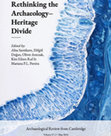
ARC 37.1 Rethinking the Archaeology-Heritage Divide, 2022
Archaeology and Heritage Management are often understood to be
related but distinct disciplines,... more Archaeology and Heritage Management are often understood to be
related but distinct disciplines, however, in recent years, the conservation,
management and preservation of archaeological sites and objects have also
between practical archaeology—which remains limited to excavation and
exploration in several countries, and heritage management—which is still
understood to be a bureaucratic activity, sometimes undertaken by private
stakeholders. This is particularly true for countries like India, where, as a
consequence of this divide, archaeological activity and heritage management
take place without consideration for each other and a large number of
excavations are carried out without proper post-excavation management plans
on the one hand, and conservation and management plan for sites created
without consulting archaeologists, on the other. This paper examines how
a comprehensive plan can be developed when Heritage Management and
Archaeology are brought together using the case study of Bhima Devi Temple in North Haryana, India.
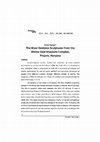
Arnava Vol. XI No. 2, 2022
Archaeological studies reveal the influence of cross-cultural assimilation on ancient art (Boardm... more Archaeological studies reveal the influence of cross-cultural assimilation on ancient art (Boardman, 2006:91). The Indic Art is no exception to this. Therefore, what is understood as Indic Art is a product of cultural and artistic assimilation by way of social, political and economic movement of people from different cultures through different periods in history. The sculptures of River Goddesses are a result of a similar socio-cultural transfusion (Von Stietencron, 2010:4).
The purpose of this paper is to analyse the River Goddess sculptures housed in the Bhima Devi Temple Museum Complex in Pinjore, North Haryana. The site in question dates back between the 8th-11th century CE and is attributed to the Gurjara Pratihara Dynasty. At present, it is in ruins and over the several years since it was unearthed in 1974 (Thapar, 1979:151), sculptures from several other temple ruins have been deposited here (Gautam and Sharma, 2020:112). This paper attempts to investigate whether or not the river goddess sculptures at Bhima Devi originally belong to the temple ruins. It employs the method of quantitative object analysis to study these sculptures with respect to other reliefs housed in the site museum and aims to place these sculptures into the purview of a larger body of research.
Visual Cultures by Shriya Gautam
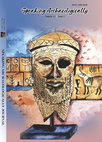
Speaking Arcaheologically Journal Volume VI Issue 1, Jan 1, 2023
Thousands of archaeological sites are being destroyed every year due ... more Thousands of archaeological sites are being destroyed every year due to development activities, mining and urbanisation. In populous developing countries, like India, the pace of destruction of archaeologically relevant sites is alarming, especially because most sites have neither been documented nor properly excavated, thus leading to an irrevocable loss in history. This paper attempts to study the significance as well as the agents of destruction on site of Sarai Amanat Khan in Tarn Taran, Punjab, which could have considerable impact on not just the architecture of Mughal India but also on the life of the man behind the calligraphy of the Taj Mahal, one of the foremost tourist spots and foreign attractions in India. Since limited archaeological mapping and documentation has been done on these sites, most information is pieced together on the basis of personal observations of the author as well as interviewing local people of the area.
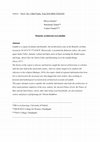
Arnava Half Yearly Journal, 2016
Ladakh is a region of Jammu and Kashmir, the northernmost state of the Republic of India, located... more Ladakh is a region of Jammu and Kashmir, the northernmost state of the Republic of India, located at 34°10′12′′N 77°34′48′′E. Historically, it included the Baltistan valleys, the entire upper Indus Valley, Zanskar, Lahaul and Spiti, parts of Ngari including the Rudok region and Guge, Aksai Chin, the Nubra Valley and Khardong La in the Ladakh Range. (Drew,1877)
The history of the region is obscure and had not caught the interest of historians or scholars until the later half of the nineteenth century, when its culture began to be studied with reference to the religion.(Shakspo, 2014) Also major chunk of regional information has been lost or destroyed in the incessant wars that dogged the early settlers, thus resulting in fictional and mythological reconstructions of historical accounts of Ladakh. This paper attempts to piece together the available information and study the architecture of three main palatial complexes of the area, namely, the Ancient Palace of Leh, the Palace of Shey and the Stok Palace, which, other than being royal households, are also monastic centres and places of pilgrimage for Tibetan Buddhists.
Arnava Half Yearly Journal, Dec 2017
Thousands of archaeological sites are being destroyed every year due to development activities, m... more Thousands of archaeological sites are being destroyed every year due to development activities, mining and urbanisation. In populous developing countries, like India, the pace of destruction of archaeologically relevant sites is alarming, especially because most sites have neither been documented nor properly excavated, thus leading to an irrevocable loss in history. This paper attempts to study the significance as well as the agents of destruction on three such sites in India, which could have considerable impact on our understanding of Buddhism in India, the land of its origin. Since limited archaeological mapping and documentation has been done on these sites, most information is pieced together on the basis of personal observations of the authors.
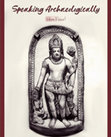
Speaking Archaeologically Journal Volume II Issue I, 2019
Although formally undefined, the term, “archaeological tourism” or “archaeotourism” is used to d... more Although formally undefined, the term, “archaeological tourism” or “archaeotourism” is used to define travelling or visitation to archaeological sites with the aim of creating public interest in heritage conservation and archaeology and the concept has attracted academic and professional interest worldwide. In India, however, the prospects of this remain largely unexplored as do its advantages. Himalayan region is an attractive tourist destination, where the ancient customs coexist with medieval and colonial influences. However, despite this, very few of the Himalayan sites are well known and fewer still qualify as UNESCO Heritage sites. Archaeology in the area, too, is largely latent as a subject. The purpose of this paper is to explore the potential of archaeological tourism, particularly in the Western Himalayas and also offer suggestions for promotion of the same. It also explores the major challenges before archaeotourism and provide possible remedies for it.
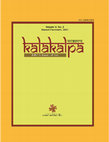
Kalakalpa IGNCA Journal of Arts, 2021
Although frescoes and murals have been a part of the Indian art since the ancient times, wall pai... more Although frescoes and murals have been a part of the Indian art since the ancient times, wall paintings that are stylistically similar to the school of miniatures of the Mughal ateliers, become prominent only after 1646 CE, when the Mughal Emperor Shah Jehan commissions the Bazaar-e-Musakkaf in the Qila-e-Mubarak (or the Red Fort) in Delhi (Sharma, 2001). Until this period, frescoes were commonly found in Mughal tombs, of which Akbar’s Mausoleum in Sikandra, near Agra, and the tombs of Nisar Begum and Prince Khusro at Khusro Bagh, Prayagaraj, are some of the finest examples.
Around the same time, several Hill States (later identified as the Punjab Hill States under the British Rule) became Mughal feudatories and consequently, the material culture, including dresses, ornaments and art in these areas became increasingly influenced by the Mughal material culture (Howard, 2013). One such borrowed element was that of frescoes and miniature paintings, which the Hill States adapted and developed as per their indigenous style and aesthetics in the late Medieval period (from seventeenth to twentieth century CE). Of these, the gauche on paper paintings are perhaps the most widely studied. However, the frescoes are by and large missing from the art historic annals.The purpose of this paper is to study the development and spread of the miniature frescoes of the Pahari style in the Hill States of Medieval India and evaluate their present condition with respect to conservation and vulnerability. For the purpose of this paper, frescoes of Nurpur and Kotla, the temple frescoes of the Gauri-Śaṅkar Temple of Katochgarh, Sujanpur Tira, Hamirpur and the Palace of Kishangarh in Kuthar, Kasauli Hills have been studied to understand the origin and the subsequent spread of the art within the hill state.

Speaking Archaeologically Journal Volume IV Issue 1, 2021
The twin villages of Garli and Pragpur in Kangra District, Himachal Pradesh (located 31.8090° N, ... more The twin villages of Garli and Pragpur in Kangra District, Himachal Pradesh (located 31.8090° N, 76.2378° E). Garli-Paragpur were given the status of a “Heritage Village '' in 1997 by the State Government of Himachal Pradesh, North India on account of their distinctive Portuguese architecture. Despite this, the villages remain relatively obscure and overshadowed by other important touristic sites even though they are quite well preserved. Therefore, there is an immediate need for a value matrix assessment for the villages, so that they can be incorporated into a proper heritage management plan.
The purpose of this paper is to study the historical importance and the present state of conservation of the villages. It also aims to suggest remedial measures that can be taken up for their touristic popularisation and analyse the impact this will have on the local economy, the standard of living of the people of the area and its long-term benefits on the development of the region. For the purpose of this study, the villages were documented individually by both the authors; furthermore, two objective site reports were composed, bearing in mind the concept of heritage tourism as well as the principles of built heritage conservation.
Papers on Women in Archaeology and Art by Shriya Gautam

National Conference on Women's Empowerment through Social, Legal and Economic Means, 2013
Media is both the messenger and the message, and is the single source of information that shapes ... more Media is both the messenger and the message, and is the single source of information that shapes our politics, national discourse and the minds of people. In the 21st century, it is the largest source of knowledge throughout the world and consequently, it has a direct as well as and indirect impact on our perception of the world and the people in it. In case of women, too, therefore, it essentially influences the society’s perception as well as their perception of themselves. In the present scenario, however, the perception of women is highly tainted with the stereotypical bias, and consequently, their representation in the mainstream media is either highly sexualised or completely romanticised. Women are depicted as either extremely objectified sexual beings with unattainable beauty or are completely demurred in their depiction as docile housewives, with the scope of their dreams limited to the attainment of an ideal man. This gives the society a message that the entire value and worth of women depends solely on how they look. Thus, there is an indirect and sometimes direct implication that there is no appreciation of intellectual women and that being strong, confident and independent is not sufficient or desirable for a woman in a world where they ought to strive for unattainable beauty in order to seek approval in the eyes of men and the society. As a result, despite the struggle for women’s equality, the subject of women’s compulsive pursuit of beauty is still shrouded in silence.
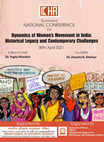
International Journal of Multidisciplinary Research and Technology, 2021
Women are perhaps one of the most misunderstood and misrepresented figures in the annals of
histo... more Women are perhaps one of the most misunderstood and misrepresented figures in the annals of
history. This stands particularly true in patriarchal societies, especially, the religious texts and
mythologies of such groups, where women are either completely ignored or mostly seen as carriers of
men’s community values. The case is no different in Indian Epic Age (circa 2000 to 700 BCE) the
period that lies interspersed between the composition of the first known Hindu text, the Rig Veda, and
the rise of Buddhism. The product of this age were the two great Indian Epics viz. the Ramayana and
the Mahabharata. Although historians and archaeologists argue about which of the two was
composed first, this particular study is centred around the position of women as seen in the two Epics
and attempts to evaluate whether it had actually deteriorated as compared to the Vedic Age or not. It
also attempts to restudy the available historiography and examine whether women in the Epic Age
really succumbed to the notions of patriarchy or whether these notions were imposed upon them
around the late ancient and early medieval times (circa 500 to 800 CE). For the purpose of this study,
the female characters of the two Epics have been studied in detail and the revision and rewriting of the
epics around 500 CE has been taken into consideration.
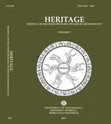
Heritage: Journal of Multidisciplinary Studies in Archaeology Vol 7 (2019), pp. 301-313, 2019
Indic art is vastly different in terms of aesthetics as well as in the way it projects reality, w... more Indic art is vastly different in terms of aesthetics as well as in the way it projects reality, when compared to the Western canon of art. The Indian view of aesthetic often combines the material aspects with the spiritual aspects of life (Coomaraswamy, 2015). Consequently, secular sculptures, which range from a procession to erotic imagery, are often found in the relief carvings of stupas and temples. While studying the relief sculptures archaeologically, it is evident that the Indian artists, throughout the ages, exploited what can be termed as the "common pool of motifs." These motifs, that first appeared in Buddhism, were, then, later applied to the Jain and the Hindu art and subsequently acquired their own religious and social connotations (Harle, 1994). One such motif is that of the Darpana dharini figurine, or the woman holding a mirror. Although more common to the temples of South India, the figurine is not absent from the three major Indic religions of Ancient India and can be traced back to the Gandhara School of Art. The purpose of this paper is to study the lady with the mirror, to attempt to trace its prototype and highlight the myths associated with it not just in the Indic context but also in the parallel cultures, from where the figure might possibly have penetrated into Indian art. For the purpose of this, the study employs an extensive comparison with the Hellenistic parallels of the figure, housed in some of the major museums of the world and presents a quantitative database listing some of the significant samples that were studied closely. It, then, attempts to address the debate of identification and significance of this figure, which seems compounded by the multiple labels the figure seems to acquire in different museums, where it has been housed and tries to evaluate whether the figure is a yakshi, an apsara or a surasundari.
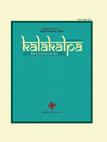
Kalākalpa IGNCA Journal of Arts Volume V:1 (July, 2020) , pp.119-130, 2020
The study of Indian Art has been the constant focus of various art historians around the world s... more The study of Indian Art has been the constant focus of various art historians around the world since the colonial times. A significant body of textual sources coupled with substantial secondary research, therefore, exists before researchers studying various aspects of Indian art, such as, relief and stand-alone sculptures, frescoes, miniature paintings among others. Consequently, the scope of error in terms of understanding and classifying the art thematically has also increased manifold. This erroneous interpretation is partly a result of faulty translations of underlying philosophical terms such as ‘rasa’, ‘tantra’ or affixing the names such as prasadhika or nayika, without fully understanding their etymological connotations. Equally responsible is the heavy reliance on secondary sources instead of consulting primary sources, not just in the case of researchers but also on the part of the museums.
The purpose of this paper, therefore, is to look into the nayika paintings and attempt to provide a solution to this problem with the help of a quantitative method of studying miniature paintings, which can be useful in generating rigorous data, easily accessible for similar approaches and can enable quantifiable conclusions, significant for both archaeological and art-historical discourses. It may be noted that whilst the case study focuses largely on a selective number of samples housed in the National Museum, New Delhi, the Government Museum and Art Gallery, Chandigarh, the Lahore Museum and the Himachal State Museum, Shimla, especially, focusing on samples that were wrongly identified and provenanced, thus, a similar approach
can be applied to miniature paintings of any theme, type or school of art.
Book Chapters by Shriya Gautam
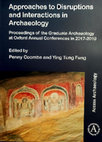
Approaches to Disruptions and Interactions in Archaeology: Proceedings of the Graduate Archaeology at Oxford Annual Conferences in 2017-2019 Edited by Penny Coombe and Ying Tung Fun, 2022
The metropolis of Allahabad is located at 25°27′N 81°51′E, in the state of Uttar Pradesh in India... more The metropolis of Allahabad is located at 25°27′N 81°51′E, in the state of Uttar Pradesh in India, roughly 436 miles to the south east of Delhi. Archaeological evidence proves that it is the second oldest city in India, with significant deposits of Epi-Palaeolithic and Mesolithic assemblages(Ansari, 2005, 328) as well as Northern Black Polished Ware, dating to 700-600 BCE (Marshall, 1915). It was a dominant settlement in ancient times, throughout the medieval period, and also in the colonial days of the British Raj. Despite this, however, the city is largely unaware of being one of the richest archaeological sites in India. Rather, many of the archaeologically relevant sites and historical buildings are presently at risk because of the rapid urban development, involving but not limited to, construction of houses, malls, expressways and roads. Adding to the threat is the fact that Allahabad is one of the largest centres of urban agglomeration in India (Census, 2011), thus, limiting the extent and scope of archaeological or restoration activities. This paper attempts to study the chaotic state of urban archaeology in Allahabad as well as examine the various destructive agents that are causing an irrevocable loss to human history. It also attempts to provide suggestions on how its impact could possibly be lessened if not completely remedied.
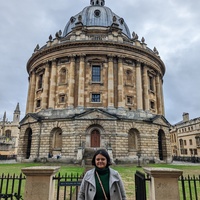


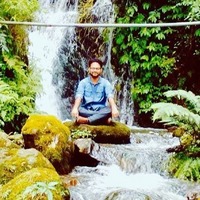
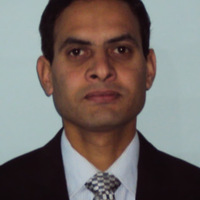


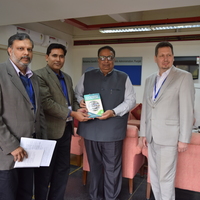

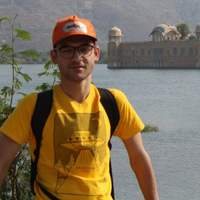
Uploads
Videos by Shriya Gautam
Papers on the Gurjara Pratihara Temples by Shriya Gautam
The Early Medieval Indian society (circa 700-1300 CE) was highly caste-ridden, where power was centralised with the ruling clans. Negotiating one’s identity and establishing the authority to rule was therefore a social necessity for any emergent new caste group. Through an intensive study of the existing historiography, the epigraphic evidence and the temples of the period, this paper attempts to examine the origin of the Pratiharas, and also study how constructing a temple served as a tool to negotiate identity and establish power in a religiously and socially divided society
It has usually been alleged by Western Scholars of Art that Indian Art very often combines varied and contrasting elements in a singular piece of work. To address this allegation, if not essentially refute it, one needs look no deeper than the Indian attitude to life, something that is reflected in its art, literature and religion. In this context, According to Ananda Coomaraswamy (1918), in the case of Indian Art, “All activity not directed in accordance with a consistent theory of the meaning and purpose of life” is “supremely impractical.” Simply put, Indic Art is created around the belief that if something does not relate to the purpose of life, it is futile. Art, thus, must have religious connotations and religion, in turn, cannot be studied in isolation from philosophy.
Bearing Coomaraswamy’s statement in mind that in the Indian context, “Philosophy is the key to the map of life, by which are set forth the meaning of life and the means of attaining its goal,” this paper will first attempt to define the Tantra Philosophy and the meaning of Puja before exploring how these two philosophical concepts are represented in the art of the site in question .
Since an archaeological study is incomplete without an analysis of the material culture, this paper shall discuss the development of Shaivite sculptures or votive idols of Shiva and attempt an object analysis of some of them from the Bhima Devi Temple in Pinjore. It will, however, not deal with any other sculptures from the site and shall limit its scope to the identifiable manifestations of Shiva, simply because despite the temple’s association with Devi, the Consort of Shiva,there is an insufficient representation of the sculptures of the female deity among the remains recovered from the partial excavations of the 1970s. On the other hand, several sculptures of Devi, that are housed in the Bhima Devi Complex, appear to be from other parallel sites(See Appendix II). Thus, in order to stay faithful to the context, this paper will limit its scope to only Shaivite sculptures, which are in abundance on the site, next only to the Vaishnavite Sculptures and sculptures of some Vedic deities.
In order to understand the Shaivite Sculptures on the site, this paper will first trace the history of the art of sculpture making with respect to Shiva before analysing the particulars of each sculpture from the site. It will also look into some generalised topics pertaining to Shiva and Shaiva sculptures, keeping in mind the utility of these concepts for researchers or readers looking into similar concepts and will therefore, be combining elements of religious philosophy with techniques of make and objective details of each sculpture, that are important for understanding religious sculptures of Indic Art in general and Shaivite Sculptures in particular.
The next section will, therefore, begin with discussing the “concept” of Shiva, as expounded by the vast cannons of primary literature, that are dedicated solely to this particular deity, as well as the interpretations and understanding of the Shaiva philosophy by scholars such as Wendy Doniger(2013).
Following this, it will look into the iconography associated with Shiva, which Sir John Marshall (1931), initially, linked with depictions on a particular seal from the Indus Valley. It will then delve into the art historical chronology of sculptures actually associated with Shiva. The final section will look into the details of the sculptures identified for certain from the site in question.
This is particularly true of the Gurjara-Pratihara Dynasty of North India, that ruled over major parts of the North from the 8th to the 12th century CE (Ali, 1987). The Gurjara-Pratiharas were one of the first four patrilineal clans of an emergent caste group called the Rajputs in North India (Sharma,2012). As they expanded their political empire and assumed imperialist tendencies, the Gurjara Pratiharas employed both temple building (cf. Gautam and Thakur, 2019) and manipulation of oral traditions and myths to establish their legitimacy to rule.
While conducting a larger research on the monuments and temples of this dynasty between 2015 to 2019, it was observed that various myths were propounded by the Gurjara Pratihara kings, epigraphically and orally, in order to create the illusion of the Divine Right to rule. Some of these oral traditions survive even today. The purpose of this paper is to analyse the myths and oral traditions of the Gurjara Pratiharas and investigate how these narratives have shaped the perception of the present societies, especially their treatment of the Pratihara temples, which were often built in support of the myths. It also seeks to evaluate how the myths influence the way the local communities interact with these sites. For the purpose of this study, ten such sites, situated across four different states were individually surveyed by the author and the preliminary responses of the locals were recorded as interviews, using the random sampling method of survey. The results were analysed and compiled which have been summarised in the conclusion.
related but distinct disciplines, however, in recent years, the conservation,
management and preservation of archaeological sites and objects have also
between practical archaeology—which remains limited to excavation and
exploration in several countries, and heritage management—which is still
understood to be a bureaucratic activity, sometimes undertaken by private
stakeholders. This is particularly true for countries like India, where, as a
consequence of this divide, archaeological activity and heritage management
take place without consideration for each other and a large number of
excavations are carried out without proper post-excavation management plans
on the one hand, and conservation and management plan for sites created
without consulting archaeologists, on the other. This paper examines how
a comprehensive plan can be developed when Heritage Management and
Archaeology are brought together using the case study of Bhima Devi Temple in North Haryana, India.
The purpose of this paper is to analyse the River Goddess sculptures housed in the Bhima Devi Temple Museum Complex in Pinjore, North Haryana. The site in question dates back between the 8th-11th century CE and is attributed to the Gurjara Pratihara Dynasty. At present, it is in ruins and over the several years since it was unearthed in 1974 (Thapar, 1979:151), sculptures from several other temple ruins have been deposited here (Gautam and Sharma, 2020:112). This paper attempts to investigate whether or not the river goddess sculptures at Bhima Devi originally belong to the temple ruins. It employs the method of quantitative object analysis to study these sculptures with respect to other reliefs housed in the site museum and aims to place these sculptures into the purview of a larger body of research.
Visual Cultures by Shriya Gautam
The history of the region is obscure and had not caught the interest of historians or scholars until the later half of the nineteenth century, when its culture began to be studied with reference to the religion.(Shakspo, 2014) Also major chunk of regional information has been lost or destroyed in the incessant wars that dogged the early settlers, thus resulting in fictional and mythological reconstructions of historical accounts of Ladakh. This paper attempts to piece together the available information and study the architecture of three main palatial complexes of the area, namely, the Ancient Palace of Leh, the Palace of Shey and the Stok Palace, which, other than being royal households, are also monastic centres and places of pilgrimage for Tibetan Buddhists.
Around the same time, several Hill States (later identified as the Punjab Hill States under the British Rule) became Mughal feudatories and consequently, the material culture, including dresses, ornaments and art in these areas became increasingly influenced by the Mughal material culture (Howard, 2013). One such borrowed element was that of frescoes and miniature paintings, which the Hill States adapted and developed as per their indigenous style and aesthetics in the late Medieval period (from seventeenth to twentieth century CE). Of these, the gauche on paper paintings are perhaps the most widely studied. However, the frescoes are by and large missing from the art historic annals.The purpose of this paper is to study the development and spread of the miniature frescoes of the Pahari style in the Hill States of Medieval India and evaluate their present condition with respect to conservation and vulnerability. For the purpose of this paper, frescoes of Nurpur and Kotla, the temple frescoes of the Gauri-Śaṅkar Temple of Katochgarh, Sujanpur Tira, Hamirpur and the Palace of Kishangarh in Kuthar, Kasauli Hills have been studied to understand the origin and the subsequent spread of the art within the hill state.
The purpose of this paper is to study the historical importance and the present state of conservation of the villages. It also aims to suggest remedial measures that can be taken up for their touristic popularisation and analyse the impact this will have on the local economy, the standard of living of the people of the area and its long-term benefits on the development of the region. For the purpose of this study, the villages were documented individually by both the authors; furthermore, two objective site reports were composed, bearing in mind the concept of heritage tourism as well as the principles of built heritage conservation.
Papers on Women in Archaeology and Art by Shriya Gautam
history. This stands particularly true in patriarchal societies, especially, the religious texts and
mythologies of such groups, where women are either completely ignored or mostly seen as carriers of
men’s community values. The case is no different in Indian Epic Age (circa 2000 to 700 BCE) the
period that lies interspersed between the composition of the first known Hindu text, the Rig Veda, and
the rise of Buddhism. The product of this age were the two great Indian Epics viz. the Ramayana and
the Mahabharata. Although historians and archaeologists argue about which of the two was
composed first, this particular study is centred around the position of women as seen in the two Epics
and attempts to evaluate whether it had actually deteriorated as compared to the Vedic Age or not. It
also attempts to restudy the available historiography and examine whether women in the Epic Age
really succumbed to the notions of patriarchy or whether these notions were imposed upon them
around the late ancient and early medieval times (circa 500 to 800 CE). For the purpose of this study,
the female characters of the two Epics have been studied in detail and the revision and rewriting of the
epics around 500 CE has been taken into consideration.
The purpose of this paper, therefore, is to look into the nayika paintings and attempt to provide a solution to this problem with the help of a quantitative method of studying miniature paintings, which can be useful in generating rigorous data, easily accessible for similar approaches and can enable quantifiable conclusions, significant for both archaeological and art-historical discourses. It may be noted that whilst the case study focuses largely on a selective number of samples housed in the National Museum, New Delhi, the Government Museum and Art Gallery, Chandigarh, the Lahore Museum and the Himachal State Museum, Shimla, especially, focusing on samples that were wrongly identified and provenanced, thus, a similar approach
can be applied to miniature paintings of any theme, type or school of art.
Book Chapters by Shriya Gautam
The Early Medieval Indian society (circa 700-1300 CE) was highly caste-ridden, where power was centralised with the ruling clans. Negotiating one’s identity and establishing the authority to rule was therefore a social necessity for any emergent new caste group. Through an intensive study of the existing historiography, the epigraphic evidence and the temples of the period, this paper attempts to examine the origin of the Pratiharas, and also study how constructing a temple served as a tool to negotiate identity and establish power in a religiously and socially divided society
It has usually been alleged by Western Scholars of Art that Indian Art very often combines varied and contrasting elements in a singular piece of work. To address this allegation, if not essentially refute it, one needs look no deeper than the Indian attitude to life, something that is reflected in its art, literature and religion. In this context, According to Ananda Coomaraswamy (1918), in the case of Indian Art, “All activity not directed in accordance with a consistent theory of the meaning and purpose of life” is “supremely impractical.” Simply put, Indic Art is created around the belief that if something does not relate to the purpose of life, it is futile. Art, thus, must have religious connotations and religion, in turn, cannot be studied in isolation from philosophy.
Bearing Coomaraswamy’s statement in mind that in the Indian context, “Philosophy is the key to the map of life, by which are set forth the meaning of life and the means of attaining its goal,” this paper will first attempt to define the Tantra Philosophy and the meaning of Puja before exploring how these two philosophical concepts are represented in the art of the site in question .
Since an archaeological study is incomplete without an analysis of the material culture, this paper shall discuss the development of Shaivite sculptures or votive idols of Shiva and attempt an object analysis of some of them from the Bhima Devi Temple in Pinjore. It will, however, not deal with any other sculptures from the site and shall limit its scope to the identifiable manifestations of Shiva, simply because despite the temple’s association with Devi, the Consort of Shiva,there is an insufficient representation of the sculptures of the female deity among the remains recovered from the partial excavations of the 1970s. On the other hand, several sculptures of Devi, that are housed in the Bhima Devi Complex, appear to be from other parallel sites(See Appendix II). Thus, in order to stay faithful to the context, this paper will limit its scope to only Shaivite sculptures, which are in abundance on the site, next only to the Vaishnavite Sculptures and sculptures of some Vedic deities.
In order to understand the Shaivite Sculptures on the site, this paper will first trace the history of the art of sculpture making with respect to Shiva before analysing the particulars of each sculpture from the site. It will also look into some generalised topics pertaining to Shiva and Shaiva sculptures, keeping in mind the utility of these concepts for researchers or readers looking into similar concepts and will therefore, be combining elements of religious philosophy with techniques of make and objective details of each sculpture, that are important for understanding religious sculptures of Indic Art in general and Shaivite Sculptures in particular.
The next section will, therefore, begin with discussing the “concept” of Shiva, as expounded by the vast cannons of primary literature, that are dedicated solely to this particular deity, as well as the interpretations and understanding of the Shaiva philosophy by scholars such as Wendy Doniger(2013).
Following this, it will look into the iconography associated with Shiva, which Sir John Marshall (1931), initially, linked with depictions on a particular seal from the Indus Valley. It will then delve into the art historical chronology of sculptures actually associated with Shiva. The final section will look into the details of the sculptures identified for certain from the site in question.
This is particularly true of the Gurjara-Pratihara Dynasty of North India, that ruled over major parts of the North from the 8th to the 12th century CE (Ali, 1987). The Gurjara-Pratiharas were one of the first four patrilineal clans of an emergent caste group called the Rajputs in North India (Sharma,2012). As they expanded their political empire and assumed imperialist tendencies, the Gurjara Pratiharas employed both temple building (cf. Gautam and Thakur, 2019) and manipulation of oral traditions and myths to establish their legitimacy to rule.
While conducting a larger research on the monuments and temples of this dynasty between 2015 to 2019, it was observed that various myths were propounded by the Gurjara Pratihara kings, epigraphically and orally, in order to create the illusion of the Divine Right to rule. Some of these oral traditions survive even today. The purpose of this paper is to analyse the myths and oral traditions of the Gurjara Pratiharas and investigate how these narratives have shaped the perception of the present societies, especially their treatment of the Pratihara temples, which were often built in support of the myths. It also seeks to evaluate how the myths influence the way the local communities interact with these sites. For the purpose of this study, ten such sites, situated across four different states were individually surveyed by the author and the preliminary responses of the locals were recorded as interviews, using the random sampling method of survey. The results were analysed and compiled which have been summarised in the conclusion.
related but distinct disciplines, however, in recent years, the conservation,
management and preservation of archaeological sites and objects have also
between practical archaeology—which remains limited to excavation and
exploration in several countries, and heritage management—which is still
understood to be a bureaucratic activity, sometimes undertaken by private
stakeholders. This is particularly true for countries like India, where, as a
consequence of this divide, archaeological activity and heritage management
take place without consideration for each other and a large number of
excavations are carried out without proper post-excavation management plans
on the one hand, and conservation and management plan for sites created
without consulting archaeologists, on the other. This paper examines how
a comprehensive plan can be developed when Heritage Management and
Archaeology are brought together using the case study of Bhima Devi Temple in North Haryana, India.
The purpose of this paper is to analyse the River Goddess sculptures housed in the Bhima Devi Temple Museum Complex in Pinjore, North Haryana. The site in question dates back between the 8th-11th century CE and is attributed to the Gurjara Pratihara Dynasty. At present, it is in ruins and over the several years since it was unearthed in 1974 (Thapar, 1979:151), sculptures from several other temple ruins have been deposited here (Gautam and Sharma, 2020:112). This paper attempts to investigate whether or not the river goddess sculptures at Bhima Devi originally belong to the temple ruins. It employs the method of quantitative object analysis to study these sculptures with respect to other reliefs housed in the site museum and aims to place these sculptures into the purview of a larger body of research.
The history of the region is obscure and had not caught the interest of historians or scholars until the later half of the nineteenth century, when its culture began to be studied with reference to the religion.(Shakspo, 2014) Also major chunk of regional information has been lost or destroyed in the incessant wars that dogged the early settlers, thus resulting in fictional and mythological reconstructions of historical accounts of Ladakh. This paper attempts to piece together the available information and study the architecture of three main palatial complexes of the area, namely, the Ancient Palace of Leh, the Palace of Shey and the Stok Palace, which, other than being royal households, are also monastic centres and places of pilgrimage for Tibetan Buddhists.
Around the same time, several Hill States (later identified as the Punjab Hill States under the British Rule) became Mughal feudatories and consequently, the material culture, including dresses, ornaments and art in these areas became increasingly influenced by the Mughal material culture (Howard, 2013). One such borrowed element was that of frescoes and miniature paintings, which the Hill States adapted and developed as per their indigenous style and aesthetics in the late Medieval period (from seventeenth to twentieth century CE). Of these, the gauche on paper paintings are perhaps the most widely studied. However, the frescoes are by and large missing from the art historic annals.The purpose of this paper is to study the development and spread of the miniature frescoes of the Pahari style in the Hill States of Medieval India and evaluate their present condition with respect to conservation and vulnerability. For the purpose of this paper, frescoes of Nurpur and Kotla, the temple frescoes of the Gauri-Śaṅkar Temple of Katochgarh, Sujanpur Tira, Hamirpur and the Palace of Kishangarh in Kuthar, Kasauli Hills have been studied to understand the origin and the subsequent spread of the art within the hill state.
The purpose of this paper is to study the historical importance and the present state of conservation of the villages. It also aims to suggest remedial measures that can be taken up for their touristic popularisation and analyse the impact this will have on the local economy, the standard of living of the people of the area and its long-term benefits on the development of the region. For the purpose of this study, the villages were documented individually by both the authors; furthermore, two objective site reports were composed, bearing in mind the concept of heritage tourism as well as the principles of built heritage conservation.
history. This stands particularly true in patriarchal societies, especially, the religious texts and
mythologies of such groups, where women are either completely ignored or mostly seen as carriers of
men’s community values. The case is no different in Indian Epic Age (circa 2000 to 700 BCE) the
period that lies interspersed between the composition of the first known Hindu text, the Rig Veda, and
the rise of Buddhism. The product of this age were the two great Indian Epics viz. the Ramayana and
the Mahabharata. Although historians and archaeologists argue about which of the two was
composed first, this particular study is centred around the position of women as seen in the two Epics
and attempts to evaluate whether it had actually deteriorated as compared to the Vedic Age or not. It
also attempts to restudy the available historiography and examine whether women in the Epic Age
really succumbed to the notions of patriarchy or whether these notions were imposed upon them
around the late ancient and early medieval times (circa 500 to 800 CE). For the purpose of this study,
the female characters of the two Epics have been studied in detail and the revision and rewriting of the
epics around 500 CE has been taken into consideration.
The purpose of this paper, therefore, is to look into the nayika paintings and attempt to provide a solution to this problem with the help of a quantitative method of studying miniature paintings, which can be useful in generating rigorous data, easily accessible for similar approaches and can enable quantifiable conclusions, significant for both archaeological and art-historical discourses. It may be noted that whilst the case study focuses largely on a selective number of samples housed in the National Museum, New Delhi, the Government Museum and Art Gallery, Chandigarh, the Lahore Museum and the Himachal State Museum, Shimla, especially, focusing on samples that were wrongly identified and provenanced, thus, a similar approach
can be applied to miniature paintings of any theme, type or school of art.
As a consequence of this, scientific information about the coins, which can further be used to reconstruct information like techniques of make, metal procurement before manufacture and a near accurate dating of samples is neither accessible nor available to archaeologists before attempting a scientific study of archaeologically significant coins. Most numismatic studies, therefore, rely heavily on iconographic analysis, deciphering the inscribed legends and comparative analysis of already identified parallels.
The purpose of this paper is to highlight the significance of archaeometallurgy as a scientific implement of analysing Indian coins and its advantages for understanding the techniques and making of coins in the past. It also attempts to talk about scientific methods such as SEM and their utility for properly dating metals used in the coin and detecting plating techniques employed in the past.
The Oxford Dictionary defines a coin as a piece of metal (gold, silver, copper etc.) of definite weight and value, usually a circular disc, made into money by being stamped with an officially authorised device. For the purpose of this essay, coins of Queen Victoria and King Edward VII from three private collections were studied. Our purpose is to study the existing comparisons between the Indian coins of Queen Victoria (later Empress) and King and Emperor Edward VII about differences in motifs, metal of make and weight existed and determine what they imply.
It compares the two tombs of Horemheb, an Egyptian Noble who went on to become a pharaoh and study the changes in his political career on the basis of the reliefs and construction of the tombs.
fragmentary in terms of uniformity of curriculum as well as the gender, the religion, the age and the caste of the recipient. This was a direct result of the traditional system of education, which was prevalent and popular in this area and mostly restricted to religious places (cf. Jones, 1989).
The purpose of this paper is to evaluate the level as well as the nature of education in the area of Punjab after the establishment of the British Rule in North India. For the purpose of this paper, various secondary sources as well as archival records were studied and an attempt was made to analyse the difference in the indigenous systems of education prevalent and the changes brought in by the colonial regime. It also attempts to assess the benefits and limitations of the new system.
As a sister-discipline of Sociology, Archaeology can not only broaden the current understanding and perceptions of culture but is also a useful tool in verifying the authenticity as well as the scope of the present definitions of culture. Since all studies pertaining to human evolution and behavioural development benefit strongly by being truly interdisciplinary in nature, use of archaeology to understand culture is currently an unexplored but very viable field of exploration and can be applied in various ways in order to create a unique structure for cultural studies, especially in the case of India, where the scope of such studies is very vast and thus, has broader implications as well as several long-term benefits.
The purpose of this paper is to examine the role of archaeology in reconfiguration of historical societies with respect to the Western Himalayas and understanding the role of foreign influences, as well as the changes brought therein, in the indigenous culture. To do so, this paper shall take into perspective the present-day ethnic jewellery of the Western Himalayan region as a case study and study it in relation to past societies with the aim to highlight cultural transmission in past societies. It will also attempt to highlight the significance of such a study for the cultural economy of the region and its impact on social identity of the present day population groups inhabiting the area.
The aim of the paper is to undertake a critical evaluation of the digital initiatives undertaken by Speaking Archaeologically in order to understand how open-access platforms, such as social media, Epicollect5 (a collaborative data gathering software), Pinterest and YouTube, can be effectively utilised in remodelling heritage education through improved accessibility to heritage resources for various publics. Such a study becomes imperative when seen in the context of physical and institutional barriers to archaeological and heritage data. Founded in 2015, Speaking Archaeologically is an archaeological education group that initially began as an online digital archive of heritage resources on Facebook. The organisation, through the use of open-access platforms, has been working towards an ethical co-creation and sharing of archaeological and heritage data digitally with the public through its Citizen Archaeology initiatives as well as regular talk and discussion sessions with professionals in the field. Digitisation efforts, in the form of Project Gandhara Connections and Project Manuscripts, have also been instrumental in bringing together dispersed heritage as well as bringing local histories to the mainstream narrative. Speaking Archaeologically, therefore, serves as an important case study to examine how digitisation may help enable collaborations across many levels. The paper, thus, would attempt to understand the strengths and challenges of using digital technologies in the organisation's heritage documentation and public outreach endeavours. This study would suggest how digital initiatives could help overcome physical limitations and remodel heritage education in a more accessible and efficient manner, potentially leading to the development of a sustainable local tourism and heritage management framework.
The evaluation framework in the paper is based on both qualitative and quantitative measures. The data in the paper is majorly based on primary observations and secondary sources such as the organisations’ website, statistics from social media handles and the YouTube channel, Epicollect5 data, blog as well as newspaper articles.
The purpose of this paper is to critically examine the display and the curation of incidences of colonial violence and death as can be seen in the case of the Cellular Jail of Port Blair. This paper also seeks to analyse how monuments of colonial times can simultaneously be used for the purpose of political identity and amplifying heritage-nationalism in the post colonial setup among the public of the present. For the purpose of this, the tourism authorities concerned with the Cellular Jail were interviewed. A detailed analysis of the display and engagement tools at the site was also undertaken alongside secondary sources.